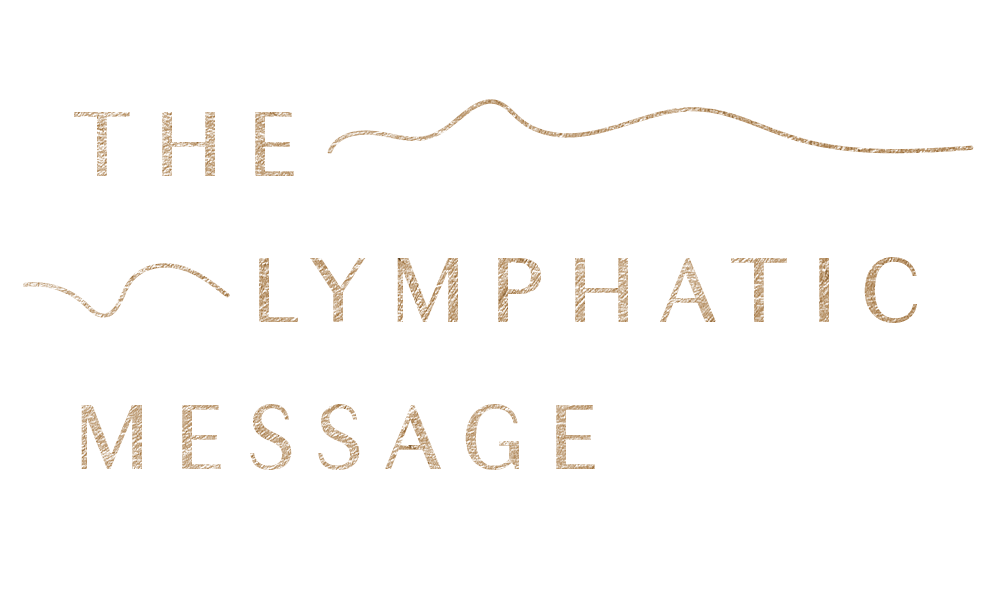Frequently Asked Questions
Why is the lymphatic system important?
The lymphatic system is often referred to as the secondary circulatory system and plays an essential role in immunity. I often refer to it as the great recycling system because it cleans out the body’s excess waste in the connective tissue that’s too big for the blood vessels to absorb. The lymphatic system runs like rivers throughout your body similar to your bloodstream. However, it doesn't have a central pump, like the heart, to move the fluid. It depends on skeletal movement, diaphragmatic breathing, exercise and lymphatic massage to function. Lymphatic drainage increases the intrinsic contractions necessary to maximize micro-circulation of fluid into lymph nodes where an immune response gets activated. Lymph nodes are the hub where bacteria, viruses and pathogens are filtered out so that lymphatic fluid can return to the bloodstream toxin-free. You have hundreds of lymph nodes, a majority of which are clustered in the neck, armpits, spleen, abdomen, top of the thigh, and behind the knees and elbows that contain disease fighting white blood cells, macrophages and lymphocytes that act as detectors signaling your immune system to destroy unwanted invaders.
When the lymph system becomes overwhelmed it can’t function optimally and may impede other bodily systems like your digestion, respiratory system, neurological system and more.
What are the benefits of Manual Lymphatic Drainage (MLD)?
Manual lymphatic drainage can help the lymphatic system clear stagnant fluid in your body which increases your immune response by defending your body against illness and disease
Regular lymphatic treatments can lessen inflammation and bloating
Lymphatic drainage can improve recovery time from surgeries and injury
Lymphatic treatments can improve the appearance of the skin, acne, scar tissue and the appearance of cellulite
Lymphatic drainage is a gentle, rhythmic, relaxing treatment can calm your nervous system, promote healing and feels rejuvenating
When do people typically come to see you?
People come to see me for a couple of reasons. There are those who come because they heard that lymphatic massage and self-care should be a standard aspect of their health regimen. Others seek treatment because their stress, digestion, hormonal imbalances, surgical procedures or other symptoms cause inflammatory responses in their bodies. Many doctors recommend lymphatic drainage to their patients recovering from elective surgery, athletic injury, after a cancer diagnosis, menstrual discomfort, Covid rehabilitation, neurological issues and those seeking palliative care.
Manual Lymphatic Drainage can help relieve the side effects of chemotherapy, radiation and surgery. Some clients are at risk for developing lymphedema, for which MLD and CDT (Complete Decongestive Therapy) are the gold standard of care.
I also receive requests to teach lymphatic self-massage and self-care at wellness retreats, yoga workshops, health conferences, curriculum in schools, and corporate team building events for those interested in preventative health.
What is Lymphedema and how does someone get it?
Lymphedema is an abnormal accumulation of protein-rich fluid, which is the result of a malfunctioning lymphatic system. This swelling typically occurs in the arms or legs but can occur in other body parts as well. There are two types of lymphedema, primary and secondary. Primary lymphedema is the hereditary result of a malformed lymphatic system. Secondary lymphedema occurs when the lymphatic system is damaged due to a trauma such as, but not limited to, cancer treatments like radiation, lymph node removal and infections. Filariasis is another leading cause of lymphedema. Lymphatic filariasis occurs mainly in tropical climates where parasitic worms are transmitted to humans, damaging the lymphatic system. Lipedema is a form of edema where the swelling is caused by the overgrowth of fat storage cells most commonly in the legs and thighs that have grown abnormally in size and number and doesn’t resolve with diet. Although the cause is unknown, lipedema is understood to be a genetic condition with hormone influences and a disruption of lymphatic circulation.
What are the symptoms of Lymphedema?
Symptoms include achy, heaviness or swelling of a limb. People often feel tingling, numbness and limited range of motion. Others report fluid accumulation in a particular area, discoloration of their skin, or weeping wounds that don't heal properly. The lymphatic system will swell many times over before symptoms are visible to the eye.
Can Lymphedema be cured?
There is no current cure for lymphedema, but with proper treatment it can be managed. Early detection and knowledge of signs and symptoms can help prevent the progression of lymphedema. Current clinical trials and surgeries are underway to simplify treatment options and improve quality of life for those afflicted with lymphedema. If you think you may be at risk for developing lymphedema, seek advice from a certified lymphedema practitioner in your area.
What are the best ways to boost the lymphatic system
The best ways to maintain proper lymph flow is with proper hydration, a healthy diet, exercise, lymphatic self-massage, dry-brushing, getting adequate sleep, reducing toxins in your products, mitigating stress and incorporating self-love and acceptance. You can sign up for our Newsletter to receive a free guide to Lisa’s Favorite Lymphatic Tips.
As with any technique designed to enhance how your body functions, we recommend virtual consultations and our on-line course to personalize your plan for self-care.
